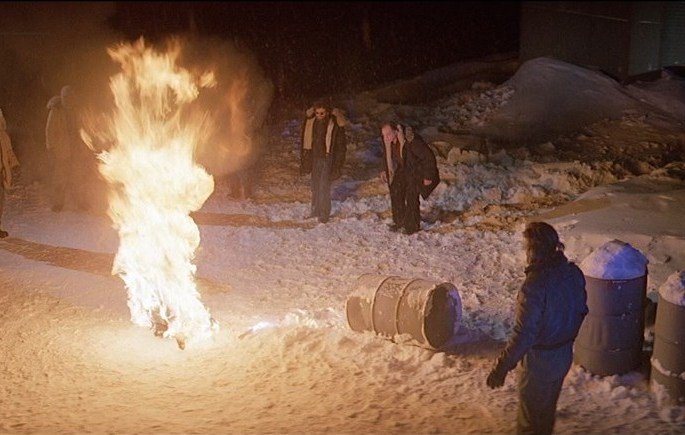THE THING (1982): A Misfire Shape-Shifts Into A Classic
During its original release, John Carpenter's remake of The Thing seemed like a disaster. Critics, both mainstream and genre, gave it a mostly hostile reception and even some members of Carpenter's inner circle didn't like its dark, despairing and cosmically gruesome take on the premise. The film's lack of commercial 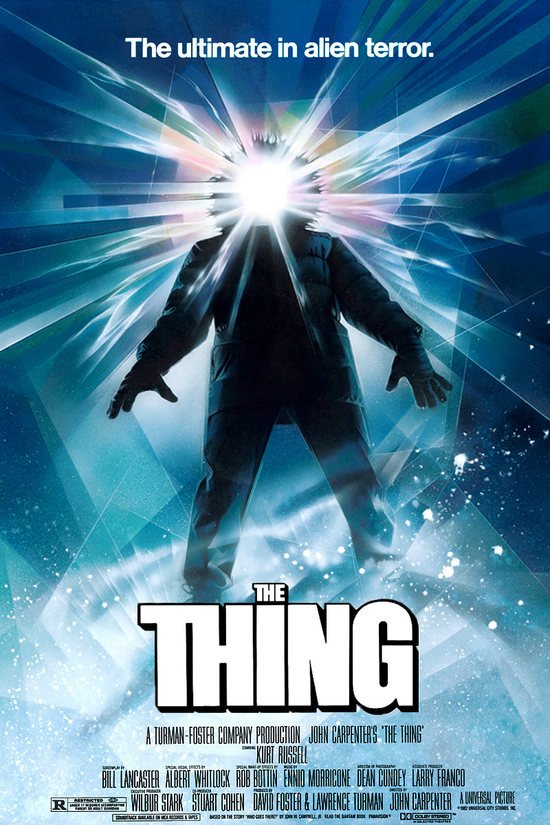 success killed a promising relationship with Universal Studios and Carpenter himself came to see it as the film that killed his upward momentum. However, time has a funny way of shifting perceptions and The Thing has come to be seen as a classic, a daring redux that succeeds on its own ambitious, uncompromising terms.The Bill Lancaster script hews closer to the John W. Campbell short story that inspired both versions of the film, focusing on a remote American outpost in Antarctica. It contains a rogues' gallery of loners, cynics and burn-outs all just marking time. However, they are forced to work together when they come under attack from an alien enemy unearthed by a Norwegian outpost. Said alien has the ability to mimic any lifeform it comes in contact with and has already killed all the Norwegians. In short order, all the men are questioning the identities of each other and themselves as they struggle to stop the ever-mutating enemy that has infiltrated their camp.This version of The Thing doesn't try to cozy up to the viewer. It's a bleak, edgy take on the "alien invasion" concept where Carpenter and company present humanity as its own worst enemy, unfurling a scenario in which our foibles (fragile psyches, paranoia, jumping to conclusions) make the heroes as susceptible to invasion as the alien's ability to imitate. Right up to the end, it never cops out or tries to make the audience feel better about this state of affairs.As grim as the above course of action might sound, it does not make the 1982 version of The Thing a gloomy slog. On the contrary, this film is absorbing in its ability to create and maintain tension. A key part of the film's ability to draw the viewer in lies in the fantastic cast, which rivals Escape From New York for the best ensemble in a Carpenter film.
success killed a promising relationship with Universal Studios and Carpenter himself came to see it as the film that killed his upward momentum. However, time has a funny way of shifting perceptions and The Thing has come to be seen as a classic, a daring redux that succeeds on its own ambitious, uncompromising terms.The Bill Lancaster script hews closer to the John W. Campbell short story that inspired both versions of the film, focusing on a remote American outpost in Antarctica. It contains a rogues' gallery of loners, cynics and burn-outs all just marking time. However, they are forced to work together when they come under attack from an alien enemy unearthed by a Norwegian outpost. Said alien has the ability to mimic any lifeform it comes in contact with and has already killed all the Norwegians. In short order, all the men are questioning the identities of each other and themselves as they struggle to stop the ever-mutating enemy that has infiltrated their camp.This version of The Thing doesn't try to cozy up to the viewer. It's a bleak, edgy take on the "alien invasion" concept where Carpenter and company present humanity as its own worst enemy, unfurling a scenario in which our foibles (fragile psyches, paranoia, jumping to conclusions) make the heroes as susceptible to invasion as the alien's ability to imitate. Right up to the end, it never cops out or tries to make the audience feel better about this state of affairs.As grim as the above course of action might sound, it does not make the 1982 version of The Thing a gloomy slog. On the contrary, this film is absorbing in its ability to create and maintain tension. A key part of the film's ability to draw the viewer in lies in the fantastic cast, which rivals Escape From New York for the best ensemble in a Carpenter film.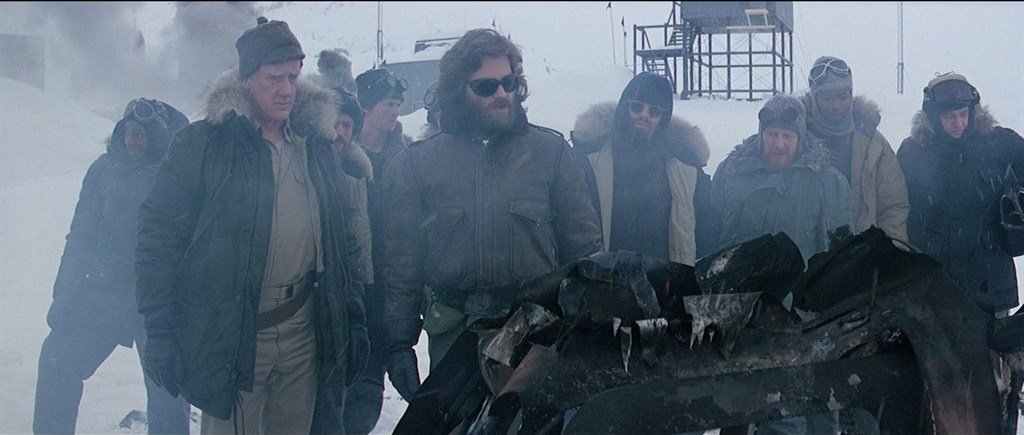 Kurt Russell toplines at MacReady, the closest thing the group has to a man of action, and he blends Carpenterian sarcastic humor with a sense of dramatic gravity that evolves alongside the ever-intensifying danger. His charismatic work plays a big role in anchoring the film's premise. Keith David shines in an early role as McCready's rival for control and there are also vivid turns from Donald Moffat as the group's by-the-book leader, Wilford Brimley as a biologist who comes unglued as he realizes what the alien can do and David Clennon, who is quietly hilarious as the unit's main burnout (he gets the funniest line when reacting to an alien transformation). The group's ranks are fleshed out with familiar faces like Richard Masur, Thomas Waites, T.K. Carter, Richard Dysart... simply put, it's an embarrassment of character actor riches.Just as important are the special effects, which really sell the unpredictable threat of the alien. Rob Bottin's creature transformations are simultaneously the grossest and most imaginative makeup effects you'll ever see in a motion picture, showing an endless amount of macabre bravura as they constantly devise new ways to twist human and animal bodies into grotesque, Lovecraftian perversions of each. Over thirty years after the fact, these alien creations remain the ones to beat in this genre. Equally worthy of praise are physical effects by Roy Arbogast, which are very important to the finale, and some typically stunning matte paintings by Albert Whitlock that flesh out the Antarctic landscape.
Kurt Russell toplines at MacReady, the closest thing the group has to a man of action, and he blends Carpenterian sarcastic humor with a sense of dramatic gravity that evolves alongside the ever-intensifying danger. His charismatic work plays a big role in anchoring the film's premise. Keith David shines in an early role as McCready's rival for control and there are also vivid turns from Donald Moffat as the group's by-the-book leader, Wilford Brimley as a biologist who comes unglued as he realizes what the alien can do and David Clennon, who is quietly hilarious as the unit's main burnout (he gets the funniest line when reacting to an alien transformation). The group's ranks are fleshed out with familiar faces like Richard Masur, Thomas Waites, T.K. Carter, Richard Dysart... simply put, it's an embarrassment of character actor riches.Just as important are the special effects, which really sell the unpredictable threat of the alien. Rob Bottin's creature transformations are simultaneously the grossest and most imaginative makeup effects you'll ever see in a motion picture, showing an endless amount of macabre bravura as they constantly devise new ways to twist human and animal bodies into grotesque, Lovecraftian perversions of each. Over thirty years after the fact, these alien creations remain the ones to beat in this genre. Equally worthy of praise are physical effects by Roy Arbogast, which are very important to the finale, and some typically stunning matte paintings by Albert Whitlock that flesh out the Antarctic landscape.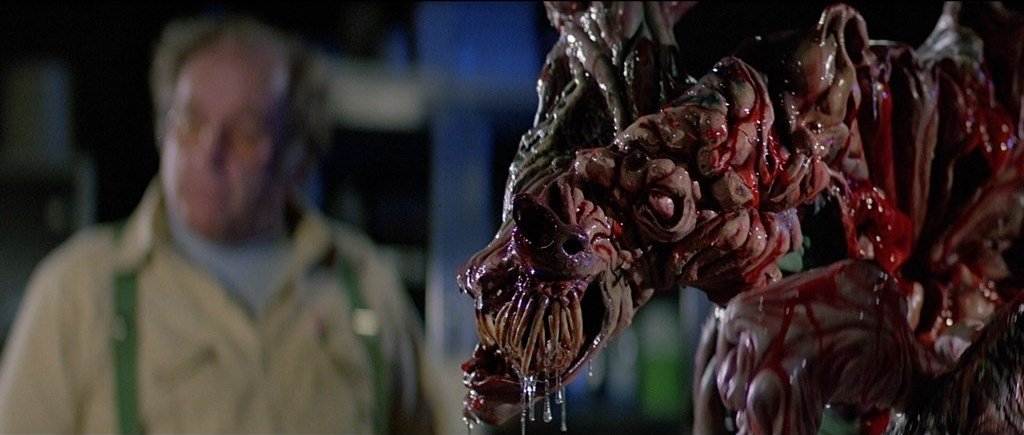 Finally and most importantly, Carpenter was at the peak of his skills here. Using atmospheric, prowling camerawork from Dean Cundey and a minimalist, creepy score from Ennio Morricone, he establishes an atmosphere of dread and the threat of violence from the early moments. His clean, crisp style of staging action makes a convincing frame for the outlandish special effects and he is also quite deft at misdirecting the audience so he can catch them off-guard with the script's whodunit plot twists.If you need a case for how good Carpenter's direction is here, just ponder a scene late in the film where MacReady holds the group hostage as he forces them into a scientific test designed to make the alien in their ranks reveal itself. It's superbly shot and edited (kudos to editor Todd Ramsay here, particularly in his deft use of jump cuts) as it allows Carpenter to use every tool in his arsenal: makeup effects, suspense, pyrotechnics, unexpected humor, tough guy banter... everything he can do is worked into this scene and pulled off flawlessly. It just might be the single best sequence in his entire filmography.
Finally and most importantly, Carpenter was at the peak of his skills here. Using atmospheric, prowling camerawork from Dean Cundey and a minimalist, creepy score from Ennio Morricone, he establishes an atmosphere of dread and the threat of violence from the early moments. His clean, crisp style of staging action makes a convincing frame for the outlandish special effects and he is also quite deft at misdirecting the audience so he can catch them off-guard with the script's whodunit plot twists.If you need a case for how good Carpenter's direction is here, just ponder a scene late in the film where MacReady holds the group hostage as he forces them into a scientific test designed to make the alien in their ranks reveal itself. It's superbly shot and edited (kudos to editor Todd Ramsay here, particularly in his deft use of jump cuts) as it allows Carpenter to use every tool in his arsenal: makeup effects, suspense, pyrotechnics, unexpected humor, tough guy banter... everything he can do is worked into this scene and pulled off flawlessly. It just might be the single best sequence in his entire filmography.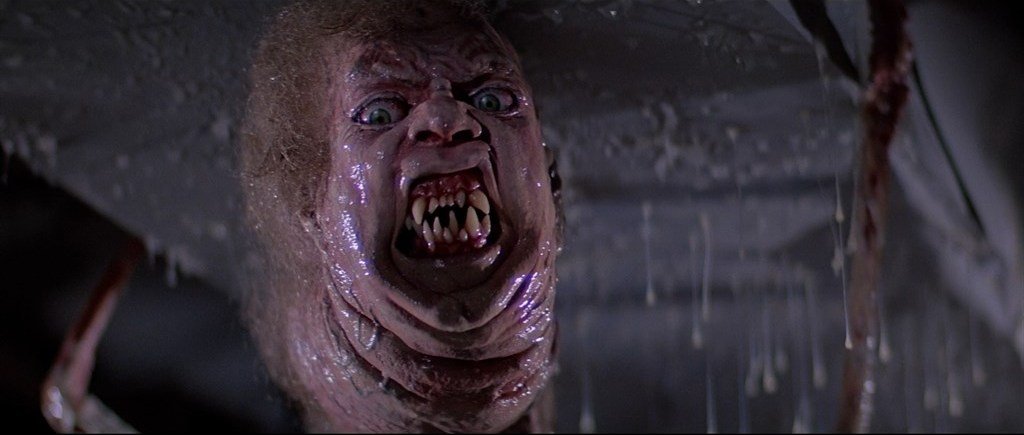 In short, this film is a defiant and dark piece of work that makes its difficult style worthwhile for the viewer via its effortless displays of cinematic skill and outrageous imagination. Like the shape-shifting monster at its core, the Carpenter version of The Thing keeps transforming into a more highly esteemed work with each passing year.
In short, this film is a defiant and dark piece of work that makes its difficult style worthwhile for the viewer via its effortless displays of cinematic skill and outrageous imagination. Like the shape-shifting monster at its core, the Carpenter version of The Thing keeps transforming into a more highly esteemed work with each passing year.


